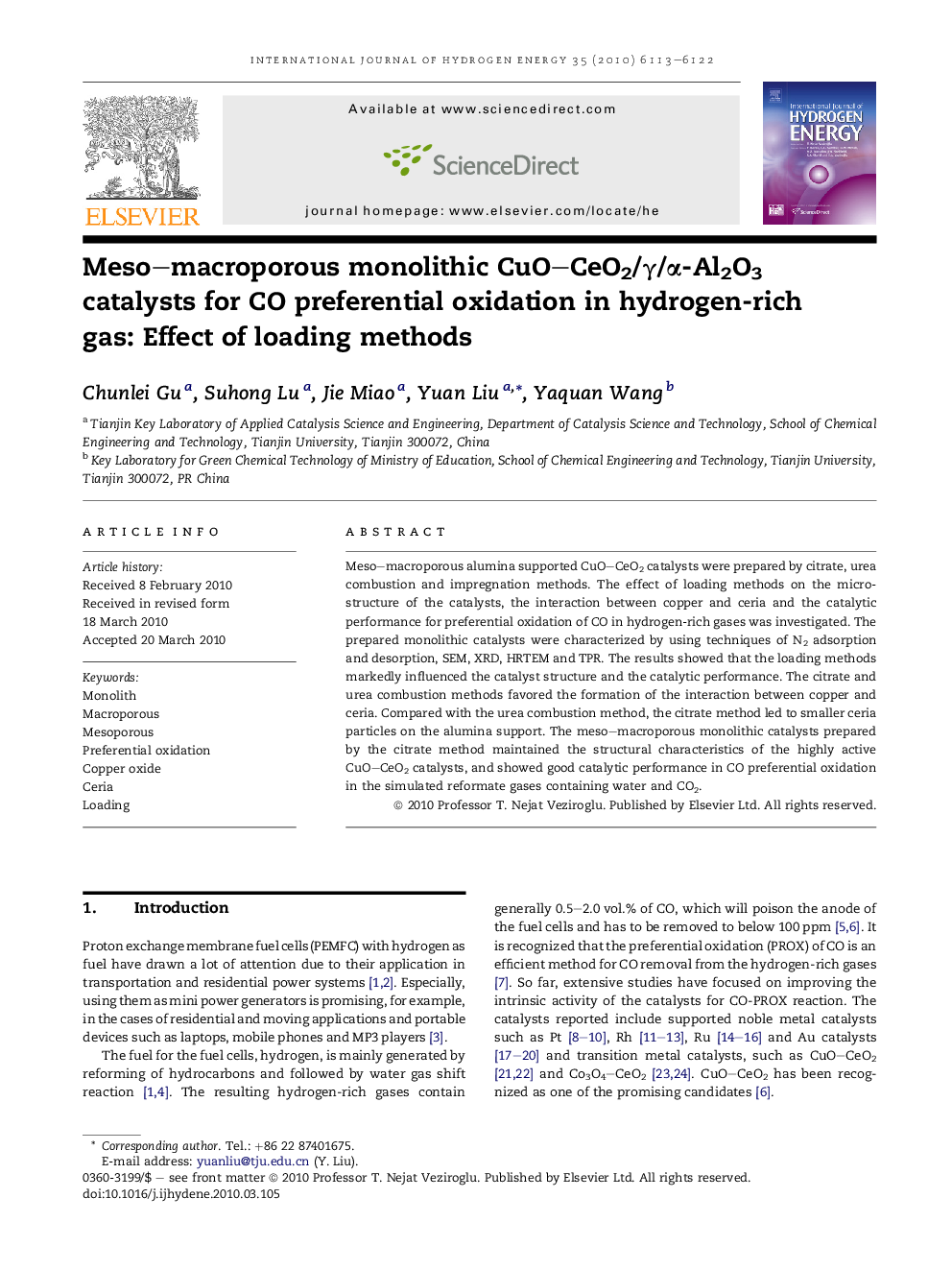| Article ID | Journal | Published Year | Pages | File Type |
|---|---|---|---|---|
| 1277072 | International Journal of Hydrogen Energy | 2010 | 10 Pages |
Meso–macroporous alumina supported CuO–CeO2 catalysts were prepared by citrate, urea combustion and impregnation methods. The effect of loading methods on the microstructure of the catalysts, the interaction between copper and ceria and the catalytic performance for preferential oxidation of CO in hydrogen-rich gases was investigated. The prepared monolithic catalysts were characterized by using techniques of N2 adsorption and desorption, SEM, XRD, HRTEM and TPR. The results showed that the loading methods markedly influenced the catalyst structure and the catalytic performance. The citrate and urea combustion methods favored the formation of the interaction between copper and ceria. Compared with the urea combustion method, the citrate method led to smaller ceria particles on the alumina support. The meso–macroporous monolithic catalysts prepared by the citrate method maintained the structural characteristics of the highly active CuO–CeO2 catalysts, and showed good catalytic performance in CO preferential oxidation in the simulated reformate gases containing water and CO2.
